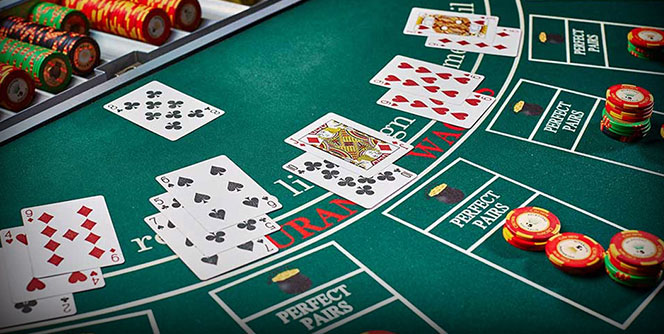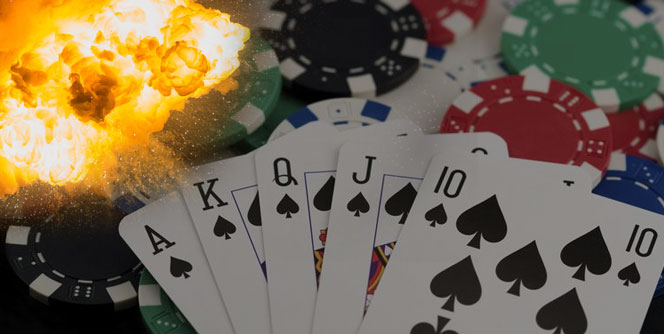In poker, the amount of chips you have in front of you, whether it is a cash game or a tournament, is essential to every decision you make at the tables. If you’re serious about the game, you must understand that there are no right and wrong decisions in isolation. The same move can be excellent or atrocious, depending on the size of your stack.
So, in this blog, we will focus on different aspects of how the size of your stack should dictate your decisions and I’ll try to make the point across through some examples. I’ll also try to explain some terms that you may have heard online or in the casinos but didn’t really understand.
Hopefully, after reading this article, you’ll be able to factor in your stack size much better into your overall gameplay plan.
Why Does Stack Size Matter so Much?
Novice players often struggle with the whole idea of the importance of the stack size and they can’t quite understand why it makes a huge difference whether you’re seated with 10, 100, or 1,000 big blinds in front of you. So, let’s start there.
Texas Hold’em is a mathematical game, so every decision you make is (or at least should be) based on crunching different numbers. Even when you’re “making a read” on your opponent, you’re effectively crunching numbers: how often do they bluff in this spot; how many hands they could be value betting that you beat; how often do they fold when you raise, etc. In the end, it’s all math and numbers.
The amount of chips you have in front of you at any given moment is another variable to be included in the calculations – and a very important one at that. Every move you make at the table directly correlates with the number of big blinds available to you, as we will explain further in this blog.
For now, though, it is good to understand you should always try your best to know how many chips you have at all times and how many chips your opponent(s) have during an active hand.
It’s Big Blinds, Not Hundreds or Thousands
Another big thing that so many players seem to get stuck on is the sheer amount of chips. For example, they’ll often say things like, “I couldn’t call 500,000 – it is such a huge bet” (in a tournament).
However, if the big blind is 60,000 at that moment, it isn’t a huge bet. It isn’t even a big bet. It is a tiny, small bet of under 10 big blinds and the fact that it is a big nominal number has nothing to do with anything!
Being Pot Committed Isn’t a State of Mind
Players will often justify any old call by saying they were “pot committed” – it is really a great excuse to do whatever you like once you get involved in a hand.
However, from a proper poker perspective, being pot committed has nothing to do with how you feel at the moment. It has everything to do with the size of the effective stack (the smallest stack in an active hand) and the number of big blinds you have to call off.
For example, let’s say you have a hand like Ace King suited in diamonds and open to $7 in a $1/$2 cash game. The big blind, with $60 behind calls and you see the flop with no ace or king, but there are two diamonds. He checks over to you and you bet $12. He proceeds to shove all in over your raise, so you need to add another $48 to win the pot and you’re drawing to the nuts.
You’re definitely pot committed here.
But, let’s take the same scenario, only give the big blind player a much larger stack of $600. You proceed to bet the same $12 on the flop and he shoves all in for all of the $600 (and you have him covered, so $600 is the effective stack).
You’re not committed to this pot! You only put $7 + $12 in it and now you’re facing a decision for another $580 with a hand that must improve to win (unless you’re facing an absolute maniac). So, while with a nut flush draw and two overs you could somehow make a case for calling, saying that you’re pot committed doesn’t cut it.
You’re only really committed to a pot if the number of chips you’d already put in isn’t much bigger than the amount of chips you still have to put in.
In the first example, you have to add about twice of what you’d already committed to the pot but given there is no further action and you’re drawing to the nuts, you are fairly committed to the pot. In the second example, you’d just be gambling.
Bet Sizing and Stack to Pot Ratio (SPR)
There are many things to consider when deciding how to size your bets in Hold’em but the size of your stack and how it will relate to the pot are definitely the most important. In fact, these two components usually dictate whether you’ll be pot committed at a certain point in the hand so you need to plan them very carefully every step along the way.
Let’s say you’re in a tournament and sitting on a stack of 20 big blinds. If you decide to open for 5 big blinds, you’re effectively committing yourself. You put in a quarter of your stack so folding after making such a huge raise would usually be a mathematical mistake.
If you raise just two big blinds, though, and face a shove for your entire stack, you can still fold. Although you’ll lose 10% of your starting stack, you still aren’t committed and can wait for a better spot.
The Importance of SPR
When you’re playing with a short stack, making decisions isn’t all that hard. Once you figure out if you want to commit to a pot, you can plan accordingly. However, things get progressively tricky as effective stacks become bigger.
This is why many cash game players believe cash games are harder to play than tournaments. It isn’t unusual for the players to have well over 100 big blinds in their stacks, which makes every single decision progressively more important.
This is where Stack to Pot Ratio (SPR) comes into play. In short, this is the ratio of chips in your stack in comparison to the pot. So, for example, if you have $200 in your stack and 3-bet a $8 open to $33 and get a call, your stack to pot ratio will be about 3:1 ($200 : $66).
If you’re wondering why this is important, we’re going back to the whole “pot committed” thing. By figuring out what your SPR will be after a certain action, be it a call or a raise, you can decide how likely you’ll be to become committed to a pot.
If we take the above scenario, there is $66 in the pot before the flop. If you decide to fire a continuation bet on the flop of $40, the pot will be $106 and you’ll have $127 in your stack.
If your opponent calls, your SPR will be well under 1:1 on the turn, so you’re pretty much committed to the pot unless you’ve completely missed and are on a pure bluff.
The same applies if you face a raise when you continuation bet – you almost have to go with any reasonable hand because even if you’re behind at the moment, you’ll often have the odds to call and try to catch up.
The best players out there have this down to science. They will size their bets in such a way as to allow them to do what they want to do. If you want to move all in on the turn, your ideal scenario is to create around 1:1 SPR going to the turn, where what you have in your stack is around the same amount of what’s in the pot.
By planning things this way, you put yourself in a great spot where you can win a sizeable pot and your bet is still big enough to illicit folds from your opponents if they don’t have a strong enough hand.
Conclusion: Just Scratching the Surface
This blog isn’t meant to provide answers to everything related to bet sizing in poker. Far from it, in fact. With figuring out how to properly size your bets being such a big and important part of the game, we’re just scratching the surface here. But, you have to start somewhere.
Understanding that your stack of chips always plays a huge role in every single decision you make is a very good start. Trying to think about SPR as you go along is also a step in the right direction. Like with everything else in poker, things won’t fall into place over night as it takes time and dedication.
However, every small bit of information can be very valuable at the tables so try to keep these things in mind next time you sit down to play. It is guaranteed to help improve your results by a fair margin!






Leave a Reply